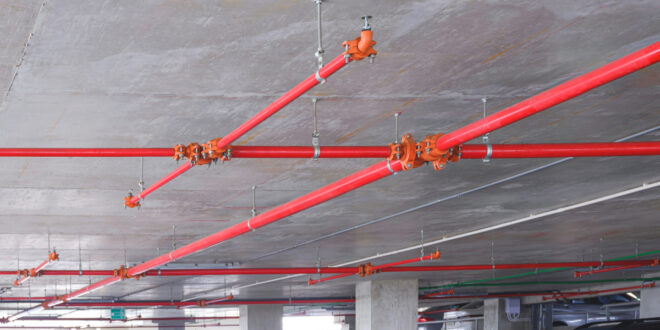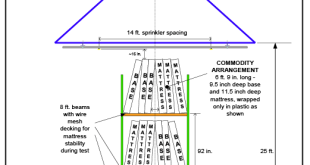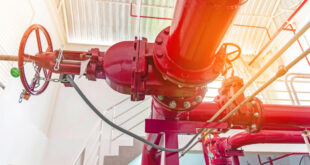With the changes to automobile vehicles over the years and the method in the way parking garages are designed, the model building codes and the sprinkler installation standards have been modified for fire protection of these structures. However, these modifications have not fully addressed the issues.
For years, if a parking garage was sprinklered in accordance with NFPA 13 most engineers classified the vehicle parking area as an ordinary hazard group 1 (OH1) hazard. During the 2022 revision cycle, the annex of NFPA 13 was changed from recommending an OH1 to indicating an ordinary hazard group 2 (OH2). Being directly involved with this change showed me the fundamentals and complexity of this issue. The technical committee on sprinkler system discharge criteria had proposals from several sources to make the hazard classification change from OH1 to OH2, extra hazard group 1 (EH1), extra hazard group 2 (EH2), or remove the recommendation altogether. In fact, the first action of this technical committee was to remove the recommendation altogether.
AFSA opposed this first action for several reasons. The OH1 recommendation had been in the standard for years, and to remove it altogether seemed strange without specific evidence. We did understand the fires that occurring in unsprinklered properties were becoming a major loss. We felt some guidance should be given. After many hours of discussion, the technical committee agreed on the OH2 recommendation.
The technical committee statements on the change are very telling. The first revision number 1201 stated, “Fire protection in parking structures, whether open or closed, provides property protection. The NFPA FPRF report (Modern Vehicle Hazards in Parking Structures and Vehicle Carriers) has shown evidence that fires in parking structures not protected by sprinklers can become major conflagrations leading to catastrophic losses. The technical committee welcomes public comment on this topic for review and discussion at the Second Draft meeting.” The second revision number 1191 stated, “This language has been clarified to show sprinklers are to be provided in all parking structures and that NFPA 13R has been added to provide sprinklers in low-rise residential structures.” We agreed. The vehicle your grandparents drove, the vehicle your parents drove, the vehicle you drive, the vehicle your children (will) drive, and the vehicle your grandchildren (will) drive have evolved over the years. The increase in the use of plastics, the decrease of metal, and the size and weight of the vehicle have changed. The fuel type has also changed. Besides gasoline and diesel-powered vehicles (aka internal combustion engines or ICE), electric-driven vehicles are increasing. What does all this mean? We just do not know how to protect the modern and future vehicles. However, just like every problem, we will find an engineering solution.
We also must consider the way we park and store the vehicles. In general, parking spots have been shrinking, while there is still a large demand for larger SUV and truck-type vehicles in the United States. Vehicle stacker garages are becoming popular in areas where real estate is at a premium. When we park or store vehicles close, the probability of a fire spreading from one vehicle to another increases. We have little data to provide proper sprinkler protection in any vehicle stacker garages over two levels.
There are several different active research programs trying to provide information for us to get ahead of this situation. One of these is the National Fire Protection Research Foundation’s program called “Classification of Modern Vehicle Hazards in Parking Structures and Parking Systems – Phase II.” AFSA is participating in the technical panel and has also partially funded this research. We need answers to provide guidance to our industry.
We can state current model building codes and NFPA 88A, Standard for Parking Structures, 2023 edition, require sprinkler protection for all parking garages. Kevin Hall and I are the AFSA representatives on this technical committee. Section 6.4 states:
6.4 Sprinkler Systems
6.4.1 Automatic sprinkler systems shall be installed in all parking structures in accordance with NFPA 13 and NFPA 13R as applicable.
The technical committee statements for this language were also very telling. “Automobile materials have changed substantially since parking garages were considered OH1. Not enough information is currently available to appropriately classify parking garages.” The second revision number 1191 stated, “Based on the increase of plastics and other challenges that modern vehicles present, a higher hazard level of protection is more appropriate. Further research in this area is needed.”
Currently, sprinkler protection is “typically” being designed to OH2 for a standard parking structure, but it is ultimately the engineer’s responsibility to classify the hazard for a particular project. In addition, does the sprinkler spacing impact the performance of the system? Can extended coverage sprinklers produce acceptable results? How long does the water supply have to last? Does the response type of the sprinkler matter? What temperature classifications of the sprinkler produce the best results? How does a dry pipe system impact the fire loss? The research is showing some interesting data, but to state we have answers to these types of questions would be misleading.
This issue will continue to develop, and the research will lead us to engineering solutions. AFSA will continue to be involved and will keep our members informed. We will ensure the contractor’s perspective is known to the technical committees and panels. Let me know your thoughts, and consider this: Would designing and installing a parking garage to an EH2 hazard classification be reasonably possible in areas subject to freezing conditions? Remember, all obstructions are required to be accounted for in an EH2 design, not just structural elements. I look forward to hearing your thoughts.
ABOUT THE AUTHOR:

John August Denhardt, P.E., ET, CWBSP, FSFPE, is the vice president of engineering and technical services for the American Fire Sprinkler Association (AFSA). He is responsible for strengthening AFSA’s engineering and technical approaches to meeting member, industry, and operational priorities, with an emphasis on service, quality, and integrity. Denhardt is a registered professional engineer (P.E.) in the District of Columbia and the states of Delaware, Maryland, Pennsylvania, and Virginia. He is NICET Level III certified in water-based systems layout, NICET Level III certified in inspection and testing of water-based systems, and a certified water-based system professional through NFPA. Denhardt is a member of the NFPA 13 technical committee on sprinkler system discharge criteria, a fellow in the Society of Fire Protection Engineers (SFPE), a member of the SFPE Board of Directors, a member of the Board of Trustees for NFPA’s Fire Protection Research Foundation and sits on the University of Maryland Department of Fire Protection Engineering’s Board of Visitors. A native of Maryland, Denhardt holds a Bachelor of Science degree from the University of Maryland College Park in fire protection engineering. Prior to this role, Denhardt was employed by Strickland Fire Protection in Forestville, Maryland, since 1994, overseeing large-scale projects and assisting with design and installation technical issues.
 Sprinkler Age A Publication of the American Fire Sprinkler Association
Sprinkler Age A Publication of the American Fire Sprinkler Association




